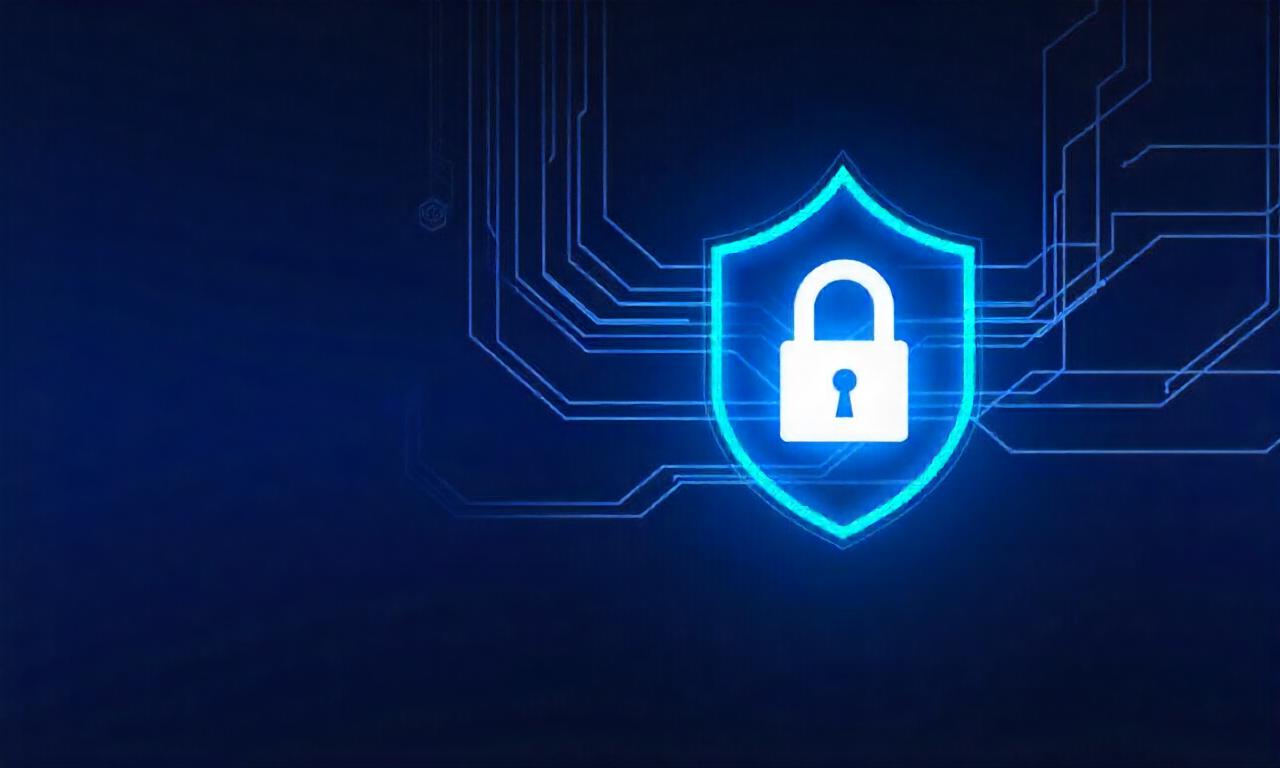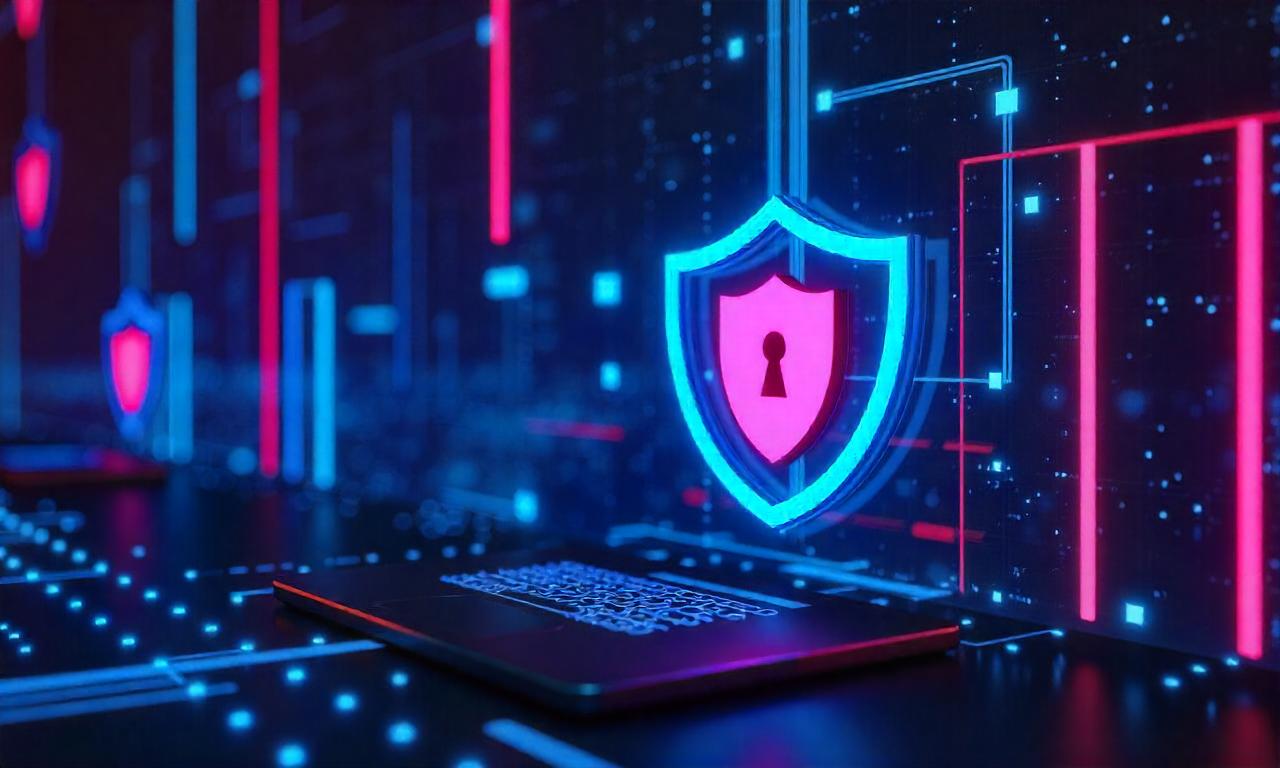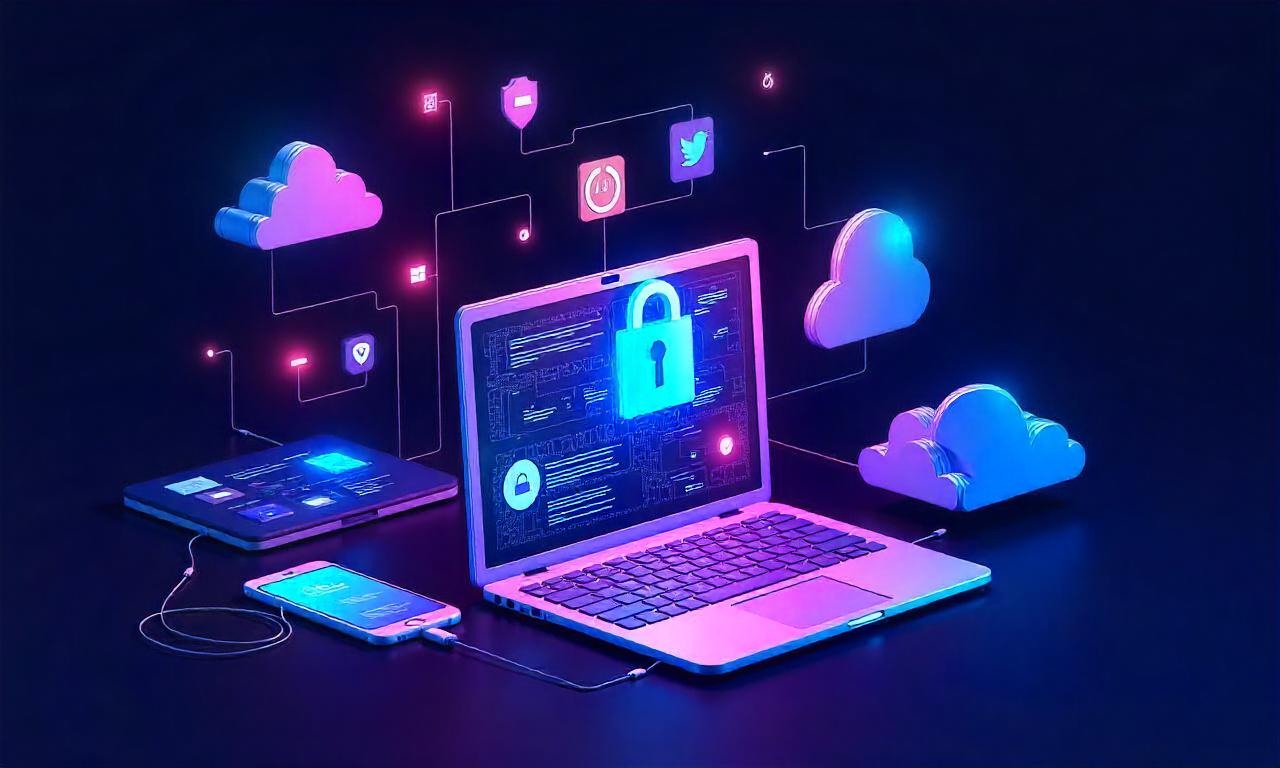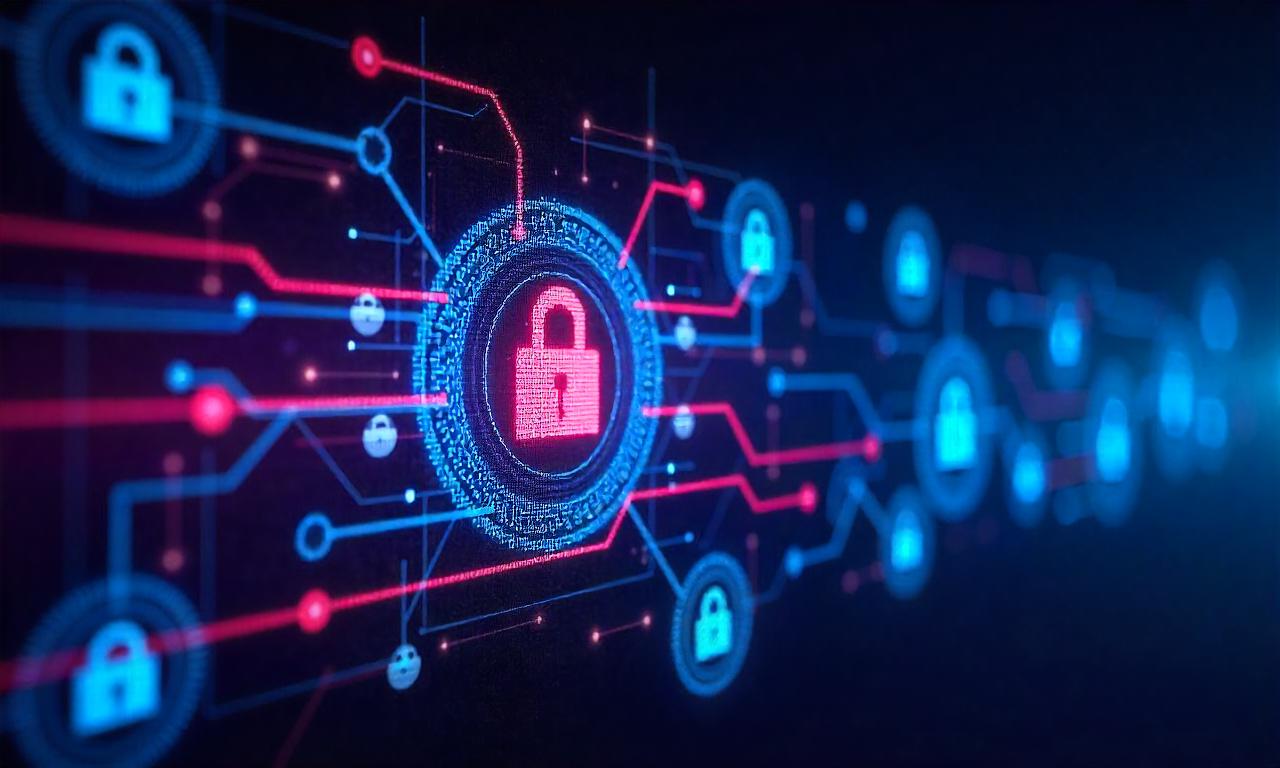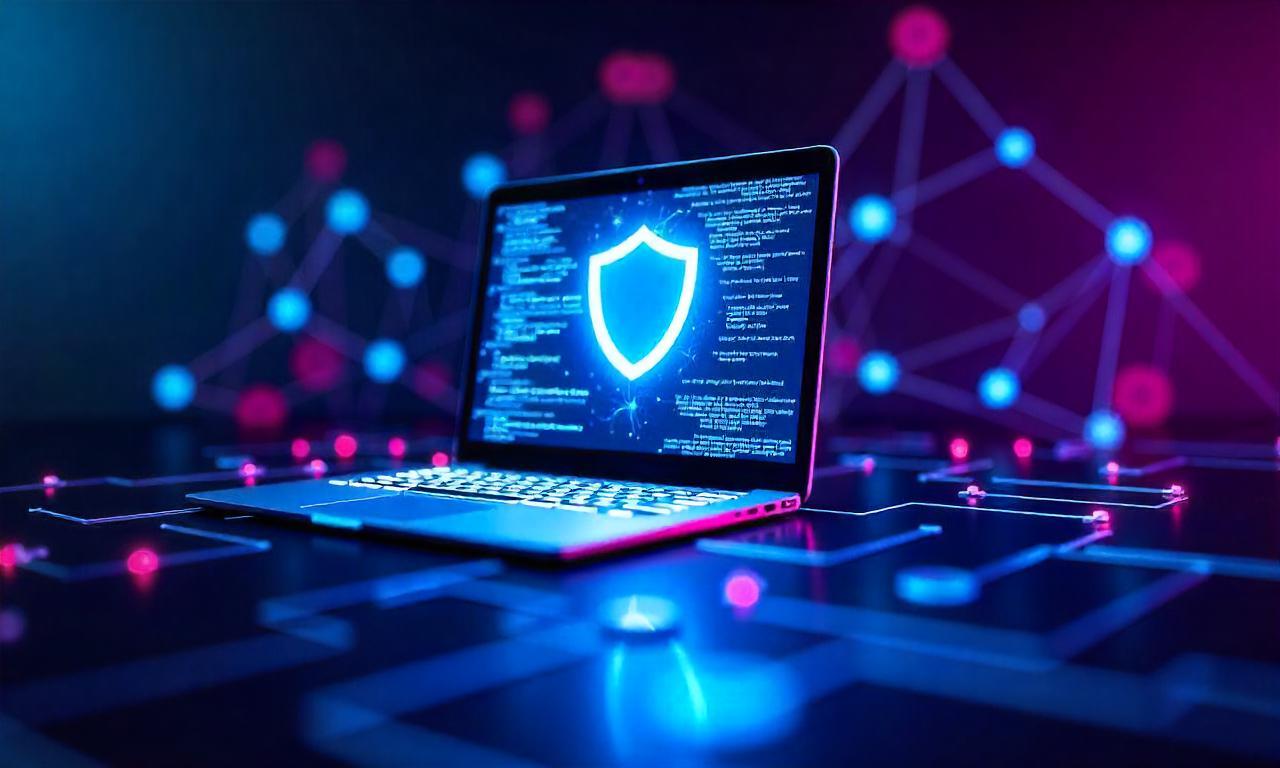In today’s digital age, cybersecurity has become a critical concern for individuals, businesses, and organizations alike. As technology evolves, so do the tactics of hackers and cybercriminals, introducing new cyber threats that can compromise sensitive data, disrupt operations, and cause financial losses. The phrase how to protect against new cyber threats encapsulates the urgent need for proactive measures to stay ahead of emerging risks. Whether it’s ransomware attacks, AI-driven phishing scams, or zero-day vulnerabilities, the landscape is constantly shifting. To safeguard digital assets, it’s essential to adopt strategies that are not only effective but also adaptable to the latest developments. This article explores five essential strategies to help you protect against new cyber threats and build a resilient defense system.
Table of Contents
ToggleUnderstanding the Landscape of New Cyber Threats
The cybersecurity landscape is becoming increasingly complex, with new cyber threats emerging at an alarming rate. According to a 2023 report by Cybersecurity Ventures, global cybercrime costs are projected to reach $10.5 trillion annually by 2025, surpassing the global GDP of many nations. This growth is fueled by advancements in technology, such as the Internet of Things (IoT), cloud computing, and artificial intelligence (AI), which create new attack vectors for malicious actors.
One of the key challenges in combating these threats is their ever-changing nature. Traditional security measures, like firewalls and antivirus software, are no longer sufficient on their own. Cybercriminals are now employing sophisticated techniques, such as phishing attacks that use AI to craft personalized messages, or zero-day exploits that target software vulnerabilities before they are even discovered. Understanding these new cyber threats is the first step in developing a robust defense strategy.
To effectively protect against new cyber threats, it’s important to stay informed about the latest trends and technologies. This includes monitoring cybersecurity news, participating in threat intelligence sharing, and investing in security training for employees. By remaining vigilant and adaptable, you can mitigate risks and ensure your digital environment remains secure.
5 Essential Strategies to Combat Cyber Threats
Regularly Update Software and Systems
Keeping your software and systems up to date is one of the most critical steps in protecting against new cyber threats. Many cybersecurity breaches occur due to unpatched vulnerabilities, which are weaknesses in software that hackers can exploit. Software updates often include security patches that fix these flaws, making it harder for attackers to gain access to your systems.
1 Why Software Updates Matter
Software updates are not just about adding new features—they’re essential for security. For example, the Log4j vulnerability in 2021 exposed millions of systems to attacks because it wasn’t patched quickly enough. By regularly updating your operating systems, applications, and firmware, you reduce the risk of exploiting known vulnerabilities. This is particularly important for third-party tools and open-source software, which may have weaker security protocols.
2 Implementing an Update Strategy
To ensure software updates are applied consistently, establish a structured update schedule. This can include: – Automating updates for critical systems to reduce human error. – Testing updates in a staging environment before deployment. – Prioritizing updates based on risk assessment and the severity of vulnerabilities. Using tools like patch management software or version control systems can streamline this process and keep your infrastructure secure.
3 The Role of Patch Management
A patch management strategy is crucial for protecting against new cyber threats. This involves not only applying updates but also monitoring the latest security advisories and vulnerability databases. Organizations should create a patching policy that defines responsibilities, timelines, and compliance checks. For individuals, enabling automatic updates on devices like computers and smartphones ensures that security patches are applied in a timely manner.
Adopt Multi-Factor Authentication (MFA)
Multi-Factor Authentication (MFA) is a powerful tool in protecting against new cyber threats. Unlike single-factor authentication, which relies solely on a password, MFA requires users to provide two or more verification factors to access an account. This adds an extra layer of security and significantly reduces the risk of unauthorized access.
1 The Benefits of MFA
Implementing MFA can prevent credential theft and phishing attacks, which are among the most common cyber threats. For instance, even if a phishing scam successfully steals a password, the attacker would still need a second factor, such as a one-time code sent to a mobile device or a biometric scan. This security measure is especially important for cloud accounts, email systems, and online banking platforms.
2 How to Implement MFA
To protect against new cyber threats, follow these steps to implement MFA: 1. Enable MFA on all accounts, including email, social media, and business applications. 2. Choose the right authentication methods, such as SMS codes, authenticator apps, or hardware tokens. 3. Educate users on the importance of MFA and how to use it correctly. 4. Monitor authentication logs to detect unusual activity or failed attempts. By making MFA a standard practice, you can secure your digital assets and reduce the likelihood of cyberattacks.
3 MFA in Action: Real-World Examples
Several high-profile breaches could have been prevented with MFA. For example, in 2020, a phishing attack on a healthcare provider resulted in the exposure of 100,000 patient records. Had MFA been enforced, the attackers would have needed more than just a password to gain access. This security strategy is not foolproof but greatly enhances account security and is a cost-effective solution for most users.
Train Employees in Cybersecurity Awareness
Human error is a major contributor to cybersecurity breaches, making employee training a vital component of protecting against new cyber threats. Phishing scams, social engineering, and insider threats often exploit lack of awareness or careless behavior. By educating employees on cybersecurity best practices, organizations can significantly reduce their risk exposure.
1 The Human Factor in Cybersecurity
According to a Ponemon Institute survey, 68% of data breaches involve human error, such as clicking on a malicious link or falling for a phishing scam. This highlights the importance of security awareness training in mitigating internal threats. Employees who are aware of risks are more likely to identify suspicious activity and take precautionary actions, such as verifying email senders or reporting unusual behavior.
2 Building a Cybersecurity Culture
Creating a cybersecurity culture within an organization involves more than just training sessions. It includes: – Regular training programs that cover topics like password management, email security, and data privacy. – Simulating phishing attacks to test employees’ response time and awareness levels. – Encouraging open communication about security incidents. By fostering a security-conscious environment, employees become the first line of defense against emerging threats.
3 Tools for Effective Training
Various tools and platforms can help deliver cybersecurity training. For instance: – Interactive training modules that simulate real-world scenarios. – Gamified learning experiences to engage employees and reinforce key concepts. – Regular updates to training materials to reflect new cyber threats and technological changes. Investing in employee training is a cost-effective strategy that can prevent significant losses caused by human mistakes.
Encrypt Data and Implement Strong Access Controls
Data encryption is a fundamental strategy for protecting against new cyber threats, especially in the event of data breaches or unauthorized access. By converting plaintext data into ciphertext, encryption ensures that even if a breach occurs, the data remains unreadable without the correct decryption key.
1 The Importance of Data Encryption
Data encryption is essential for protecting sensitive information, such as personal data, financial records, and trade secrets. For example, the 2017 Equifax breach exposed 147 million consumers’ data because it was stored in plaintext. Had encryption been used, the impact of the breach could have been minimized.
2 Types of Encryption and Best Practices
There are two main types of encryption: 1. Symmetric encryption, which uses a single key for both encryption and decryption. 2. Asymmetric encryption, which uses a public key and a private key to secure data. To implement encryption effectively, follow these best practices: – Encrypt data at rest and data in transit to cover all potential exposure points. – Use strong encryption algorithms, such as AES-256 or RSA-2048, for maximum security. – Store decryption keys securely, using key management systems or hardware security modules. By combining encryption with access controls, you can protect against unauthorized access and data leaks.
3 Access Controls and Role-Based Permissions
Access controls are complementary to encryption in securing data. Implementing role-based access control (RBAC) ensures that employees and systems have only the necessary permissions to access sensitive data. For example, a finance team should have access to financial records, while a marketing team should not. To enhance security, use multi-layered access controls that include: – Biometric authentication (e.g., fingerprint scans or facial recognition). – Time-based access restrictions (e.g., limiting access to specific hours). – Audit logs to track who accessed what data and when. These strategies create multiple layers of defense, making it harder for attackers to compromise your data.
Regularly Backup Data and Test Recovery Procedures

Data backups are a crucial strategy for protecting against new cyber threats, especially ransomware attacks, which encrypt data and demand payment for decryption. By maintaining regular backups, you ensure that data can be restored quickly in the event of a breach or disaster.
1 The Role of Backups in Cybersecurity
Backups act as a safety net for data loss caused by cyberattacks, hardware failures, or natural disasters. For instance, the 2021 Colonial Pipeline ransomware attack cost the company $4.4 million in ransom payments, but data backups allowed them to recover operations within a few days. To protect against new cyber threats, ensure backups are performed regularly and stored securely. This includes offline backups to prevent data loss in case of ransomware that targets online storage systems.
2 Best Practices for Data Backup
Effective backup strategies should include: – Automating the backup process to ensure consistency and reliability. – Using multiple storage locations (e.g., cloud storage and physical servers) for disaster recovery. – Testing backup recovery procedures regularly to confirm that data can be restored quickly. By verifying backup integrity, you can minimize downtime and financial losses during a security incident.
3 The Importance of Backup Testing
Many organizations fail to recover data during a cyberattack because backups are not tested. For example, in 2022, a small business lost $150,000 in data loss because their backup system had not been tested for months. To ensure backup effectiveness, implement a backup testing schedule that includes: – Simulating data loss scenarios to evaluate recovery time. – Checking backup files for corruption or missing data. – Documenting the process for audit and improvement. Regular backup testing is a preventive measure that can save time, money, and reputation during a cybersecurity incident.
The Evolving Nature of Cyber Threats
Cyber threats are constantly evolving, with new attack techniques emerging to exploit technology gaps and human behavior. For example, AI-powered phishing has become more sophisticated, with deepfake videos and customized messages that mimic trusted contacts. This threat requires advanced detection tools and employee vigilance to protect against new cyber threats.
In addition, zero-day exploits—attacks that target software vulnerabilities before they are publicly known—are becoming more frequent. According to a MITRE Corporation report, the number of zero-day vulnerabilities has increased by 40% over the past three years. This trend underscores the need for proactive security measures, such as regular patching and real-time monitoring.
Another emerging threat is supply chain attacks, where hackers compromise third-party vendors to infect your systems. The SolarWinds attack in 2020 demonstrated how supply chain vulnerabilities can lead to massive breaches. To protect against new cyber threats, vet third-party providers and implement security protocols that include endpoint monitoring and log analysis.
Case Studies: Learning from Cybersecurity Incidents
Real-world examples highlight the impact of cyber threats and the importance of prevention strategies. One notable case is the Colonial Pipeline ransomware attack in 2021, which disrupted fuel supply across the eastern United States. The attack exploited a software vulnerability, and backup testing played a key role in recovery.
Another example is the 2019 Facebook data breach, which exposed the personal data of 530 million users. The breach was caused by a vulnerability in the platform’s API, which was uncovered through a third-party audit. This incident emphasizes the need for regular security assessments and multi-layered defenses to protect against new cyber threats.
The 2020 Zoom security incident also illustrates how third-party software can be targeted by hackers. Despite initial reports of vulnerabilities, Zoom implemented security updates and improved encryption standards to address the issue. These case studies show that proactive strategies are essential for long-term security.
The Future of Cybersecurity: Trends to Watch
As technology advances, so do cyber threats. Emerging trends in cybersecurity include the integration of AI for threat detection, the rise of quantum computing in breaking encryption, and the increasing use of IoT devices in attacks.
One notable trend is the adoption of AI-driven security solutions, which can analyze vast amounts of data to detect anomalies and predict threats. For instance, AI-powered intrusion detection systems can identify malicious activity in real time and minimize damage.
Another trend is the growth of ransomware-as-a-service (RaaS), where hackers use pre-built malware to target businesses with minimal technical expertise. This trend means that even small organizations are vulnerable to attacks.
To stay ahead of these threats, invest in predictive analytics, zero-trust architecture, and regular employee training. These strategies ensure that your security measures are future-proof and adaptable to new challenges.
A Table: Comparing Key Cybersecurity Strategies
| Strategy | Key Features | Primary Benefits | Implementation Tips | |———|————-|——————|——————–| | Software Updates | Security patches, automated updates | Prevent known vulnerabilities | Schedule updates, test before deployment | | Multi-Factor Authentication | Two or more verification factors | Reduce unauthorized access | Choose reliable methods, educate users | | Employee Training | Cybersecurity awareness programs | Mitigate human error | Regular sessions, phishing simulations | | Data Encryption | Convert plaintext to ciphertext | Secure sensitive data | Use strong algorithms, store keys safely | | Data Backups | Regular data copies | Recover from breaches | Test backups, store in multiple locations |
This table provides a quick comparison of essential strategies to protect against new cyber threats. It helps readers understand the differences and prioritize actions based on specific needs.
FAQ: Frequently Asked Questions About Cybersecurity
Q: What are the most common cyber threats today?
A: Common cyber threats include phishing attacks, ransomware, malware, DDoS attacks, and data breaches. Each threat requires different strategies to protect against new cyber threats.
Q: How often should I update my software?
A: Software updates should be applied as soon as they are released, especially for critical systems. Establish a schedule that matches your business needs and prioritize patches for high-risk vulnerabilities.
Q: Is multi-factor authentication (MFA) worth the effort?
A: MFA is a cost-effective solution that significantly reduces the risk of credential theft and phishing attacks. Even a simple method like SMS codes can enhance security and protect against new cyber threats.
Q: Can employee training really prevent cyberattacks?
A: Employee training is crucial in preventing human error. Studies show that trained employees are 30% less likely to fall for phishing scams. Implement regular training to maintain awareness and reduce risks.
Q: What should I do if my data is encrypted by ransomware?
A: If data is encrypted by ransomware, backup testing is essential. First, isolate infected systems, then restore data from backups. If no backups are available, negotiate with attackers or pay the ransom as a last resort.
Conclusion: Staying Secure in a Digital World
In conclusion, protecting against new cyber threats requires a comprehensive approach that includes regular updates, MFA, employee training, data encryption, and backup procedures. By implementing these strategies, individuals and organizations can minimize risks and ensure long-term security.
As cyber threats evolve, so must your security measures. Stay informed, adapt to new technologies, and invest in proactive solutions. The future of cybersecurity lies in integration of AI, quantum-resistant encryption, and zero-trust models. With the right tools and strategies, you can navigate the digital landscape safely and protect your data from emerging threats.
—
Summary: This article outlines five essential strategies to protect against new cyber threats, including regular software updates, multi-factor authentication, employee training, data encryption, and backup procedures. By implementing these measures, individuals and businesses can reduce vulnerabilities and mitigate risks from emerging cyber threats. The article also includes a table comparing key strategies and FAQ section to address common concerns. With proactive planning and continuous adaptation, cybersecurity can be strengthened to ensure digital safety in an ever-changing threat landscape.



